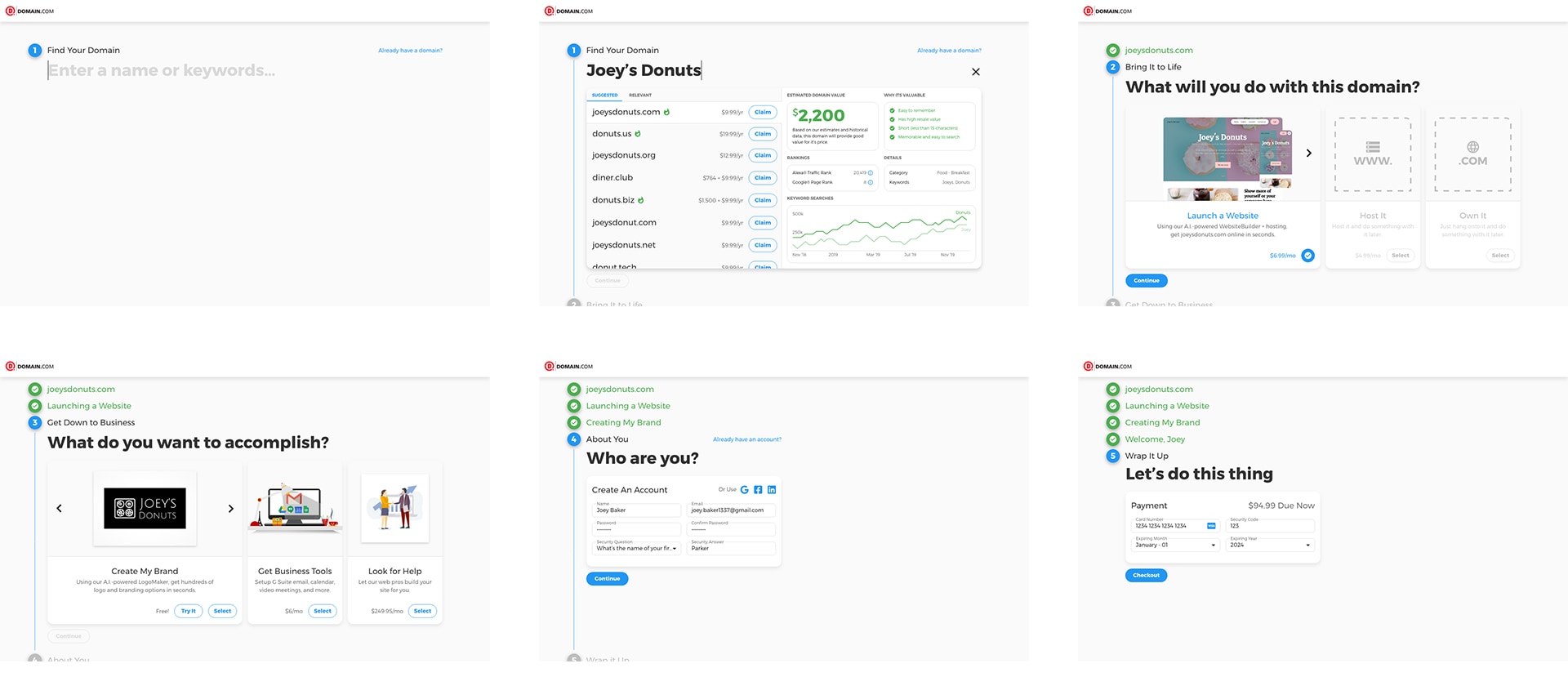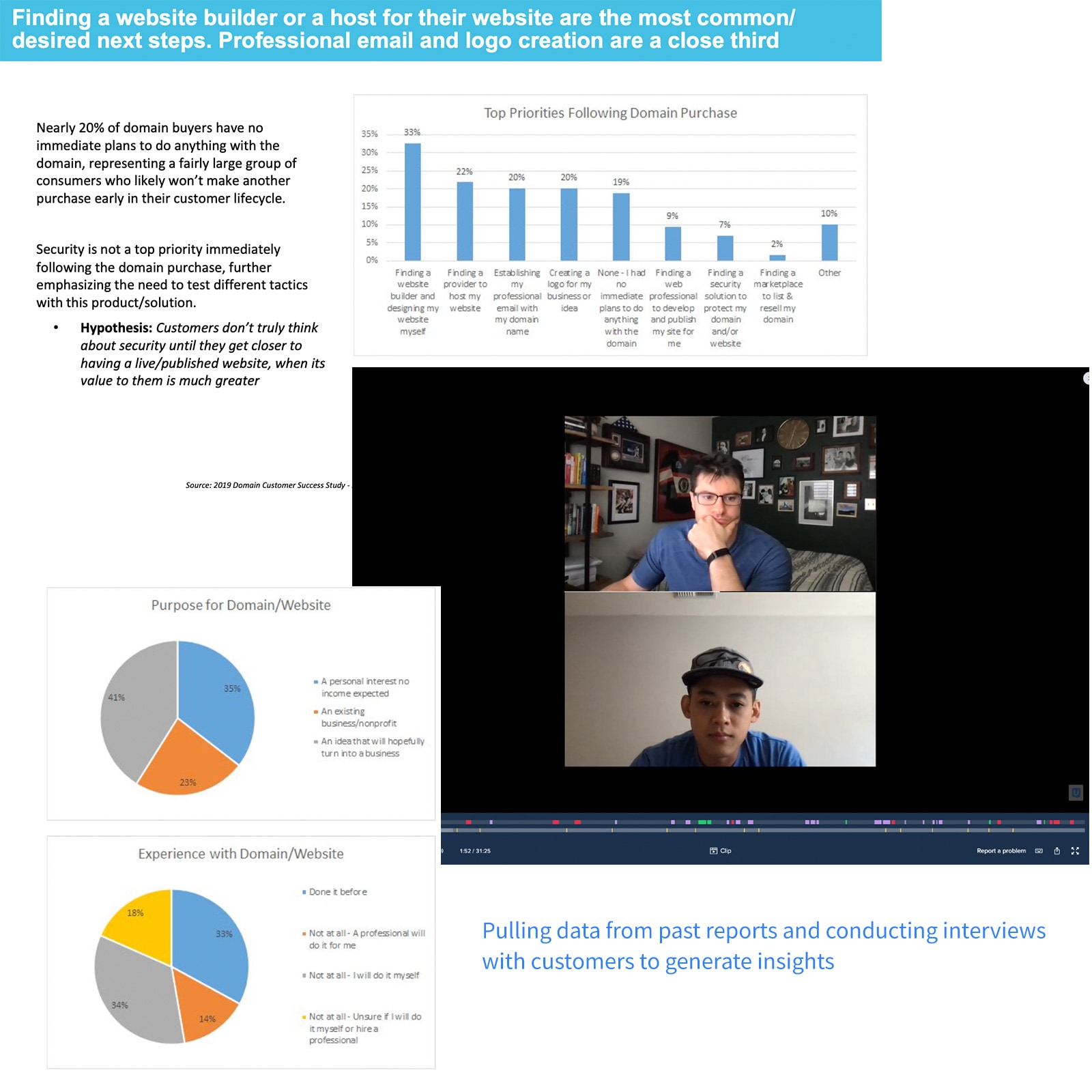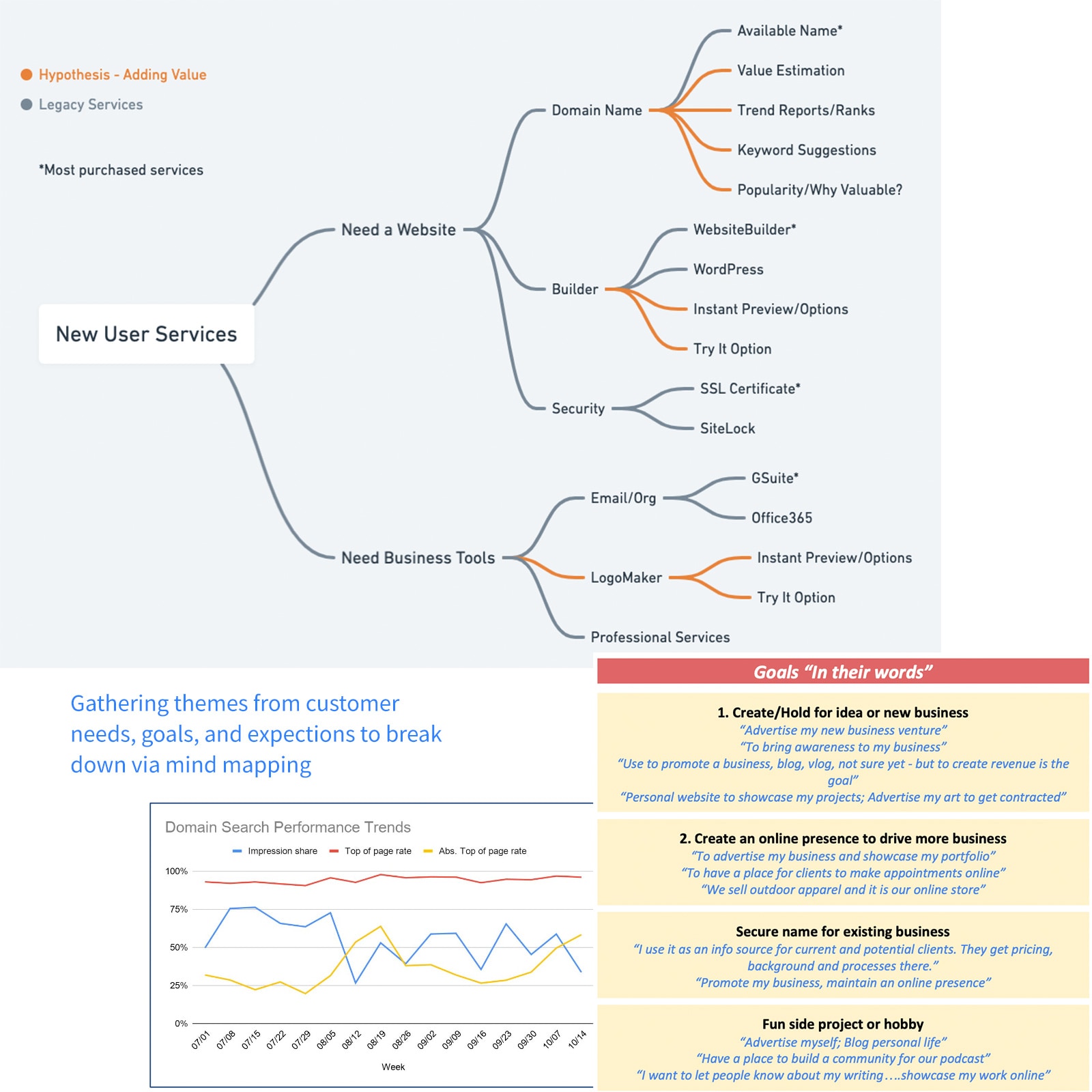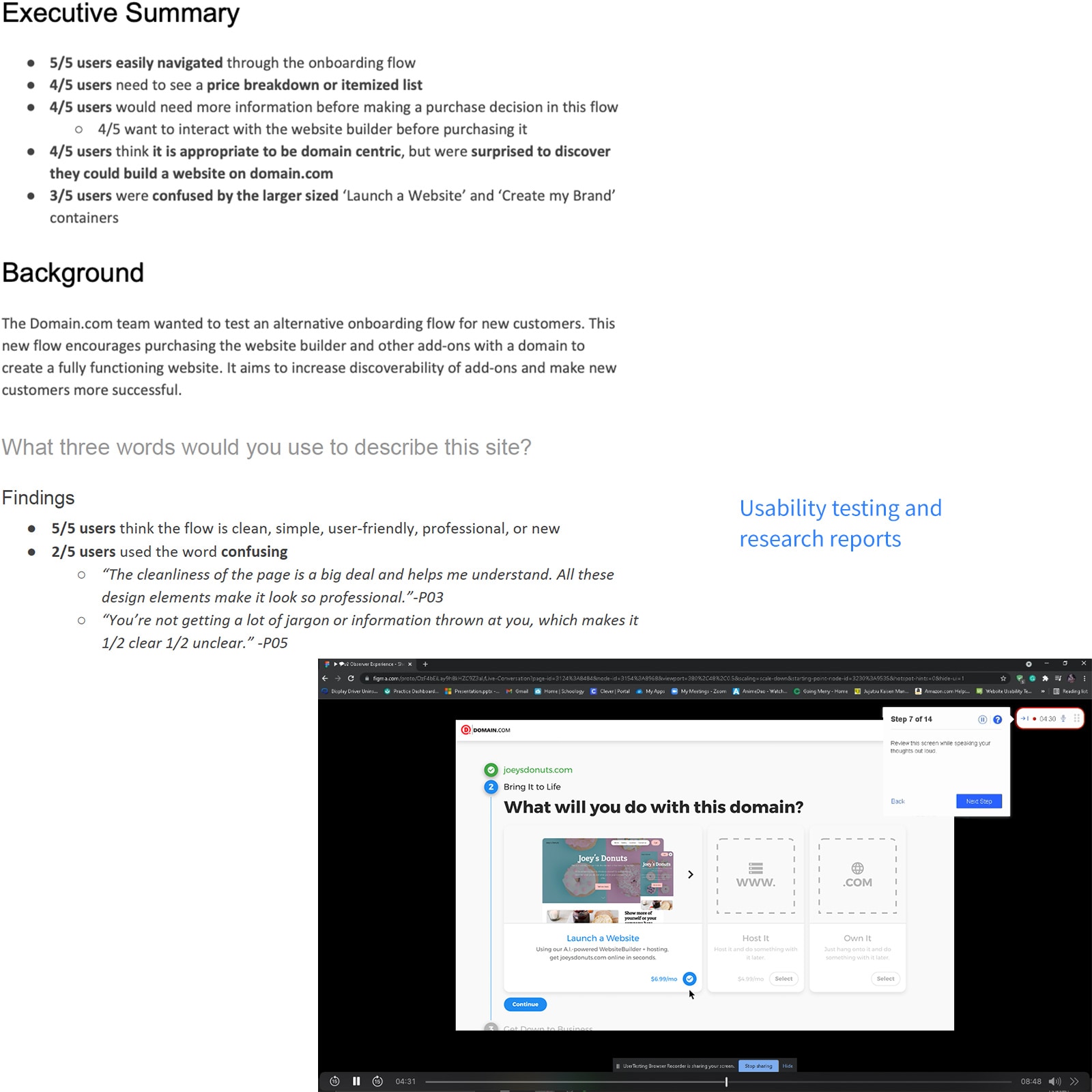Role
As a UX Designer for Endurance Group's Domain.com, I led research and design to help small businesses purchase domains and manage websites. During the annual "Innojam" innovation sprint, teams competed to solve complex problems, with winners gaining the opportunity to build their solutions.
Challenge
The InnoJam theme, "Robot Rock", focused on solving customer issues using AI and automation. I aimed to address a key problem: customers purchasing domains but failing to build websites. I saw an opportunity to leverage AI to convert unused domains into functional sites seamlessly.
Process
Working solo, I interviewed customers to understand barriers in converting domains to websites. I then brainstormed via user flows and mind maps, creating rapid prototypes to test and present to the InnoJam panel.
Goal
Design a seamless, AI-driven domain purchasing experience that encourages instant website creation.
Timeline
1 Week, October 2019
"The fact that it's AI powered and can find what I need is so much easier. I would use that and the price seems very reasonable if it's doing all of the work for me."
User review
Discovery
Gather Feedback
To understand customer behaviors and pain points regarding domain and website creation, I interviewed three customers and analyzed purchasing data. Key insights included:
- 20% of customers that purchase a domain just hold it or don't plan on making it into a website
- Customers are unsure if their domain, idea, or business will succeed, so they refrain from spending more money
- Customers get lost, overwhelmed, or bombarded with too many different options to build a website
- A third of customers feel the need to turn their domain into a website right after purchasing
- Customer noted that it's too difficult to build a website, citing they don't know how to code
Design goal
A seamless, AI-driven domain purchasing experience that encourages customers to create and launch a website instantly.
Ideation
Mind Mapping
I analyzed what new customers value most in a domain or website, then drafted a mind map to visualize key themes:
- Availability: Is my domain/idea actually available on the market?
- Value: How much would my domain/idea be worth once its a website?
- Findability: How easy is it to find my domain/idea through Google, Yahoo, etc?
- Perception: What does my domain/idea look like come to life?
User Flows
I created user flow diagrams to map the domain-to-website purchase journey, covering various options and use cases.
UX statement
As a new customer, I need to quickly secure my domain name and setup my brand's website coding-free, so that I can increase engagement with my business and gain more customers.

User flow diagrams.
Prototyping
Wireframes and Concepts
With limited time, I sketched wireframes for the experience, establishing design principles to guide the work:
- Chunking: With so many different options and paths to take, only present the most crucial information to the user at an appropriate time and within a logical order
- Delightful: Showcase the power of AI by automating arduous, complicated tasks that exceed users' expectations
- Control: Don't force users into situations they're not comfortable or familiar in and allow them to freely pick and choose, backtrack, etc. at their convenience
High Fidelity Prototypes and Flows
I converted wireframes into high-fidelity Adobe XD prototypes, conducted internal reviews, and prepared for user testing.
View Prototype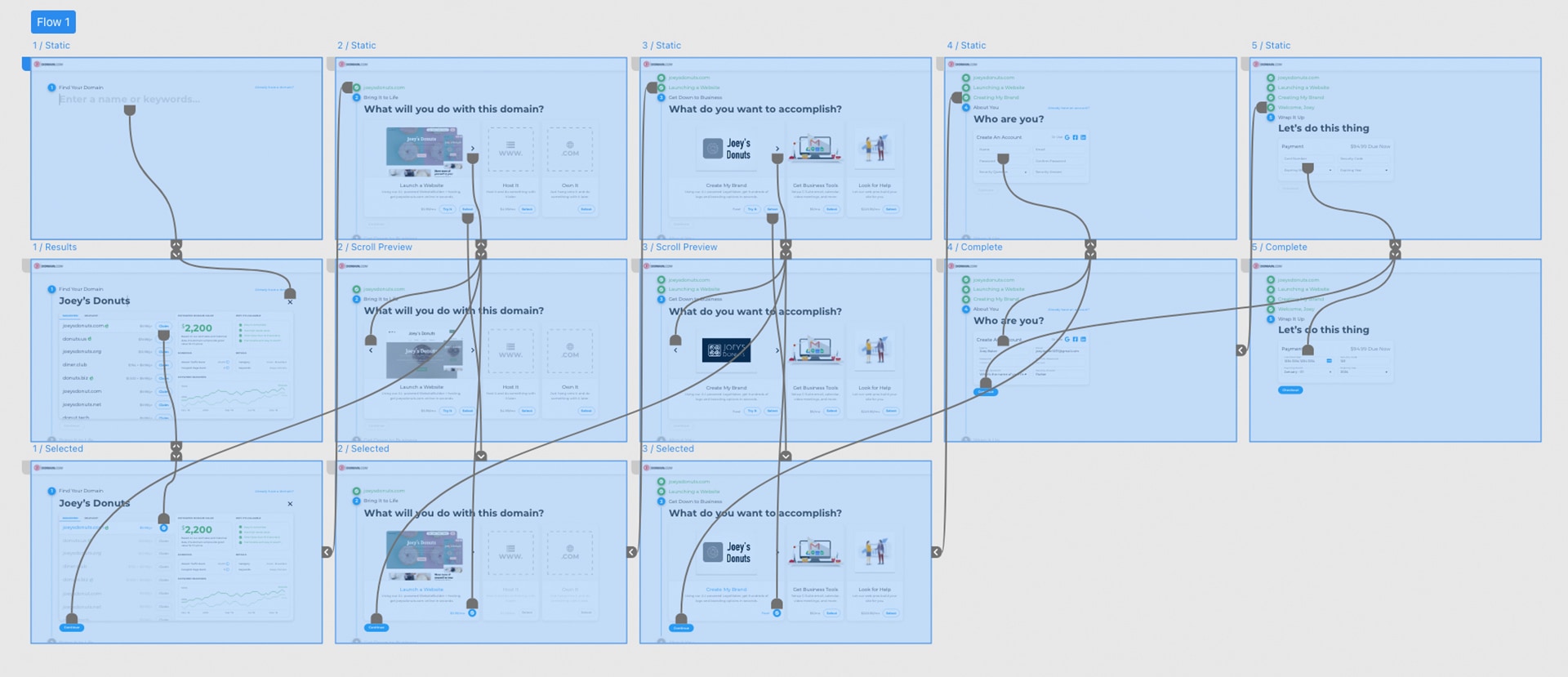
High fidelity prototypes and versions.
User Testing and Iterations
Usability Testing
I tested the prototype with five customers. Findings:
- All customer found it easy to navigate and the design was "clean" and "professional"
- Most wanted additional pricing information, itemization, details, etc.
- Most were surprised to see website creation options but appreciated that they were "right in reach"
- Some were confused by the call-to-actions and content around creating and launching a website
- User Index Score: 3.7/5
Iteration
With one day remaining, I iterated to address feedback:
- Make call-to-actions more clear around what the user will do exactly
- Display a price breakdown/list instead of just the subtotal and total
- Include more information on the variety of website building and enhancing services
"This changes the way I've thought about building a website. If this can automate everything for me, especially with having to pick and choose a new domain website name, that would be fantastic."
Test participant
The Outcome
I submitted the project to the InnoJam panel and won the grand prize against strong competition. The work was later adapted into a project that successfully improved domain-to-website conversion rates.
View Prototype
